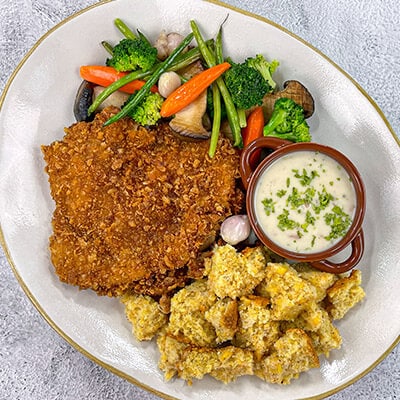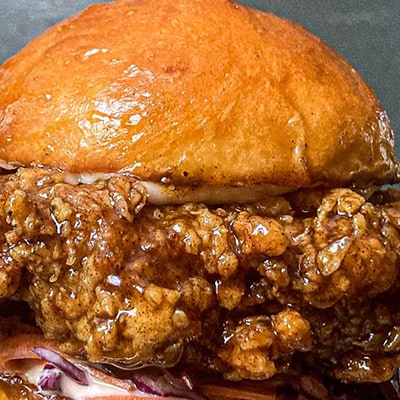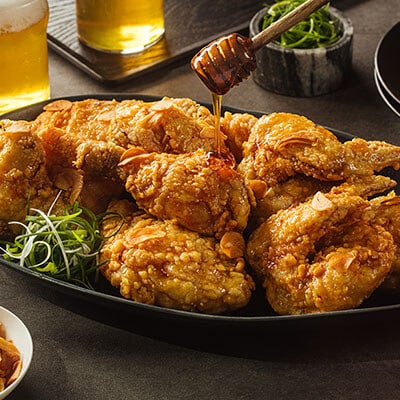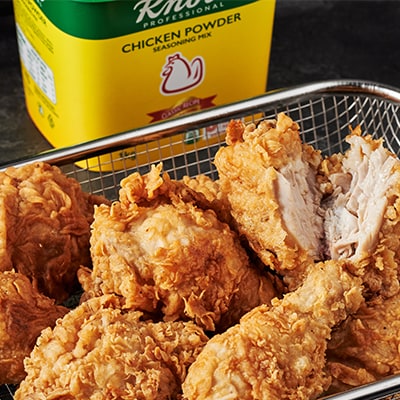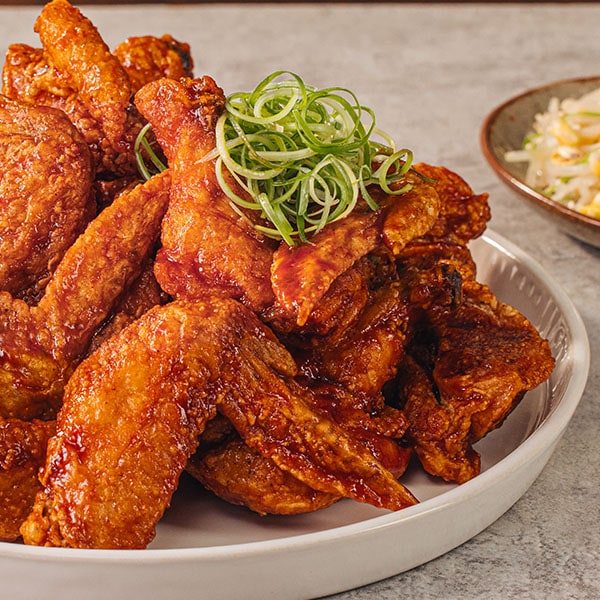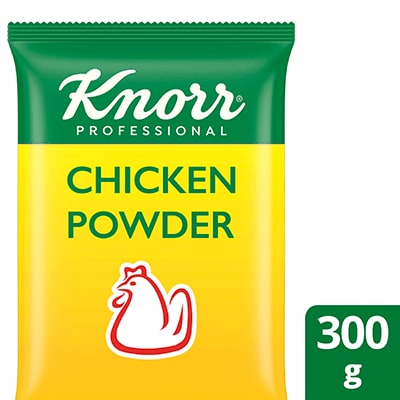Brining chicken is one of the smartest moves your business can make. Besides producing extra juicy, super flavorful fried chicken, this technique can also protect your bottom line.
Think using a fried chicken brine will make you spend more, increase overhead, and slash your revenues? The truth is quite the opposite. Read on to discover how a simple brine can keep your costs low and your profits high.
Brining Chicken Requires Minimal Ingredients

You only need three ingredients to make a brine that will transform your fried chicken.
Brining requires only three ingredients – all pantry staples you likely already use in many other recipes. No additional raw materials, no extra cost. Just a slight adjustment to your inventory, and you’re good to go.
Here are the three ingredients you need for a chicken brine recipe:
1. Sodium
This component is nonnegotiable. Sodium is crucial for the scientific processes that make your meat juicy, moist, and flavorful. Traditional brine recipes for chicken call for salt, but a potent alternative is Knorr Chicken Powder.
Thanks to its umami boost and rich flavors, Knorr Chicken Powder not only injects the necessary sodium your chicken needs, but also replaces other herbs and spices, making it more cost-effective. This versatile ingredient is also made from real chicken, which explains how it can enhance that natural chicken taste.
2. Sugar
What kitchen doesn’t have sugar? Though some chicken brine recipes suggest sugar is optional, it’s essential for balanced flavors. It counteracts the saltiness of the solution and helps achieve a nice brown finish on your restaurant fried chicken – versus a plain, bland-looking piece of meat. Plus, Filipino diners prefer their food slightly sweet, so adding sugar ensures a profile that matches your market’s tastes.
3. Liquid
You need a liquid to dissolve the powders and granules, and to submerge the meat, allowing the solution to permeate throughout. Water is the most used liquid, which won’t cost you much – even tap water will work fine. But if you’re aiming for a Southern finish and an upgraded flavor profile, you can opt for buttermilk.
Experience the difference brining brings with Chef Pau's Next-Level Fried Chicken. Then, explore other profit-ready recipes using different brine variations like Crispy Soy Garlic Fried Chicken, Salted Egg Fried Chicken Wings, and Crispy Fried Chicken Fillet with Waffles.
Chicken brine recipe cost computation
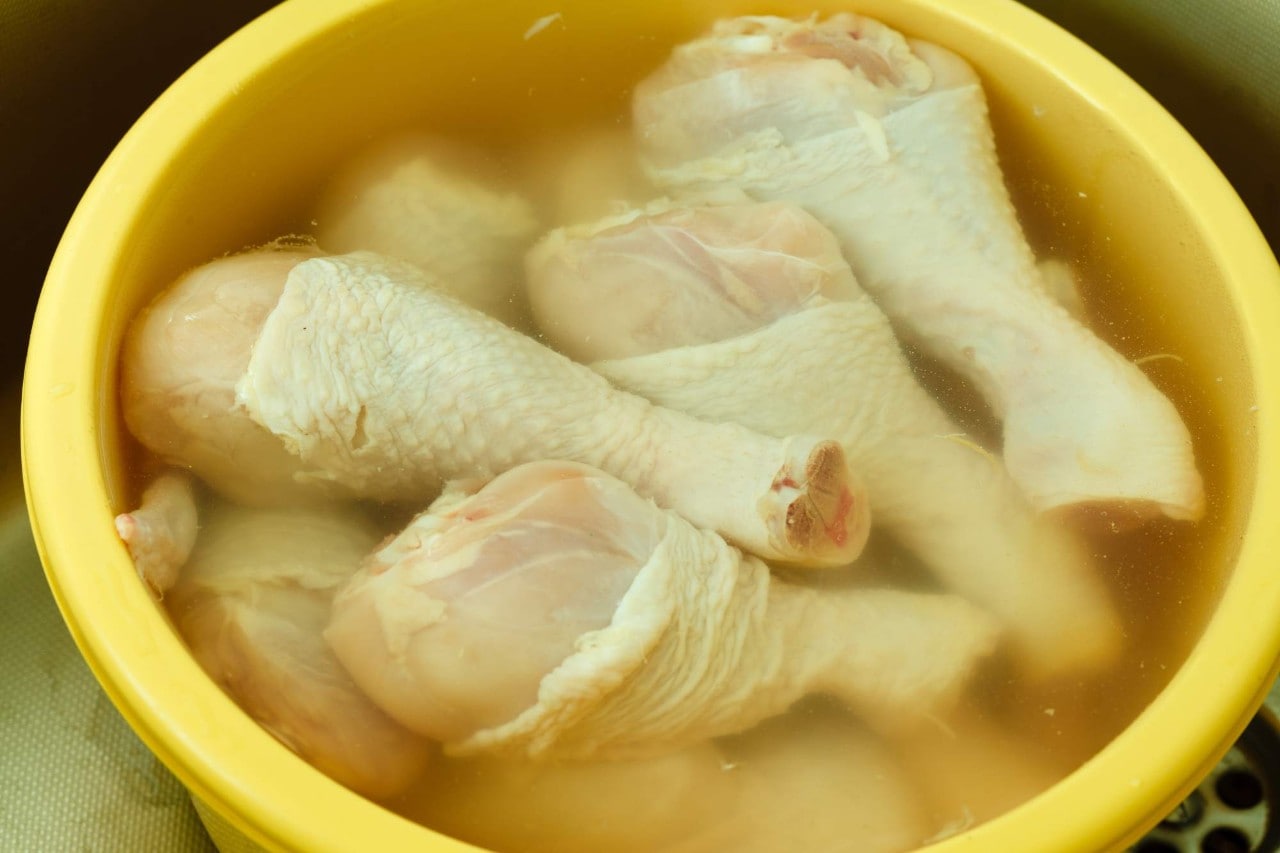
A brine costs less than ₱5 for every single serving.
Here's the recommended brine recipe for a whole (1.2-kilo) chicken and its corresponding cost.*
Ingredient |
Quantity |
Ingredient Cost |
|
Knorr Chicken Powder |
70 |
g |
₱32.17 |
White sugar |
25 |
g |
₱2.25 |
Water |
1000 |
mL |
₱1.50 |
Total food cost |
₱35.92 |
||
*The cost is approximate at the time of publishing (2024).
For each serving of fried chicken, the approximate brining cost is:
Chicken serving |
Brining cost |
Per quarter (300 g) |
₱8.98 |
Per piece (150 g) |
₱4.49 |
How will your brining cost affect your selling price? Based on these computations, a brine will only cost you less than ₱5 for every suggested serving of fried chicken (150 g). While some might see that as an additional (unnecessary) expense, the benefits still far outweigh the minimal costs.
More Cost-Controlling Benefits of Brining Chicken
Brining can also decrease your costs for other ingredients (i.e., flavorings, coating, and breading) and non-ingredient expenses (i.e., tenderizing, marinating, reducing cooking time).
Using chicken brine removes the need for a tenderizer.
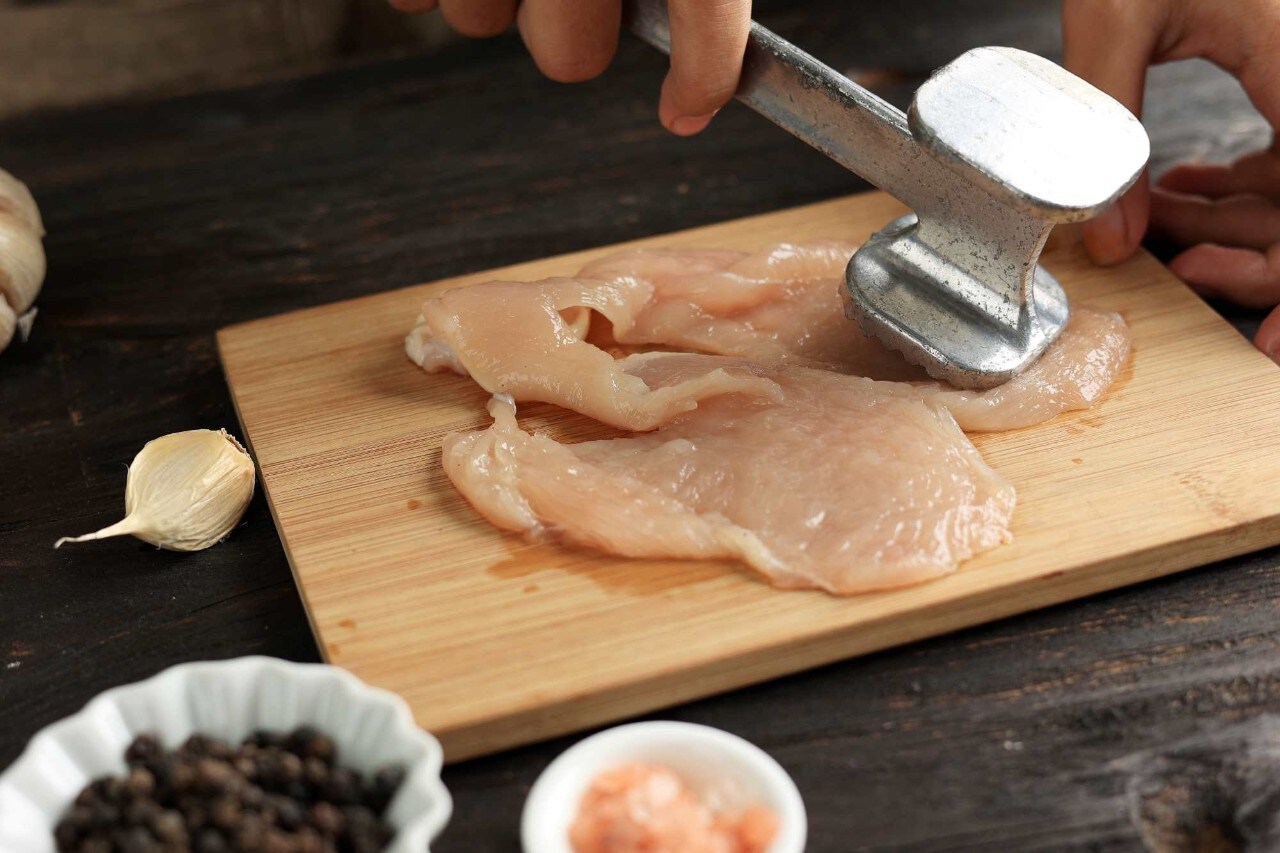
By brining chicken, you eliminate the need to tenderize chicken with a meat mallet.
Some fried chicken recipes call for a tenderizer to ensure moist and juicy results. Two options are available: 1) incorporating a powdered meat tenderizer or baking soda for bone-in chicken, or 2) using a meat mallet to pound boneless chicken and break down the protein. Both methods incur additional costs, including labor, which can spike up your selling price or eat into your profits. A brine removes all that as it also functions as a tenderizer.
You don’t need a fancy marinade if you opt to brine chicken.
Marinating is a tried-and-tested way of infusing chicken with flavor, but it comes at a cost. Marinades typically require more ingredients than a brine: oil, an acid, a liquid, seasonings, herbs, and other flavorings. And you’ll need a large batch of the mixture to make sure the flavor gets through. And even then, marinades often don’t penetrate all the way into the meat.
Brining chicken reduces coating and breading costs.

Worry less about bland fried chicken if you take the brining route.
A common mistake in preparing fried chicken is trying to compensate for bland meat with an overly flavored, ultra-crispy, golden exterior. While most diners will appreciate the visual appeal, they can still end up disappointed if the meat inside lacks flavor.
Your customers are paying for fried chicken not fried breading – so you have to make the meat the star. By focusing on brining your chicken, you can reduce the need for various types of flours, expensive milks, binders, and powdered flavorings.
A brine can make unwanted meat cuts more palatable.
Some customers avoid white meat because it’s perceived as tough and dry. Brining can change this view, making even the breast part juicy and flavorful. You can apply this technique to other meats. Brining can make tougher (more affordable) offcuts of beef or pork tasty and tender. That means doing your part in reducing food waste – another win for your bottom line!
Brining can help manage overhead costs.
The process is straightforward: combine the ingredients, bring the mixture to a simmer, let it cool, add the chicken, and set it aside overnight. Brining is mostly an inactive process, allowing you and your staff to focus on prepping other dishes.
The process doesn’t require additional tools and equipment, besides the pots, bowls, and refrigerator-safe containers you already have. You also won’t need to invest in extra manpower, kitchen space, or utilities.
Plus, brining in batches makes your cooking process even more efficient. Cooking times are also reduced as brined chicken cooks quickly and evenly. Increased kitchen efficiency translates to reduced costs!
Brining chicken offers numerous advantages to help manage your costs effectively. First of all, you only need one item instead of a bevy of salts and spices. You can also use cheaper offcuts and never worry about their flavor. Plus, soaking your chicken in a flavorful bath leaves you with more time to do other things, such as create sides or fixings.
By adopting this technique, you’re offering your customers a superior product while keeping expenses in check and ensuring healthy revenues. Although the process might feel new initially, it will do wonders for your business – in more ways than you can imagine. So go ahead and start brining chicken!
